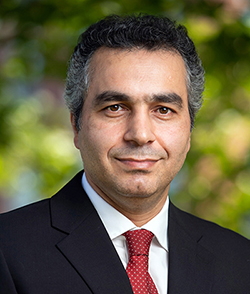WIRELESS NETWORK
Wireless networks and wireless communications technology have the potential to make universal Internet use a reality, which will clearly lead to global connectivity, roaming, and ubiquitous communications. Given the astonishing increase in the number of Internet users (doubling every 90 days), this course aims to examine the relationship between the Internet and wireless networks. To that end, the emerging third generation (3G) wireless standards and how they accommodate data communications in addition to voice will be highlighted. While the emphasis will be on the networking issues and aspects of wireless communication networks, the relevant physical issues will briefly be reviewed as well.
LECTURE NOTES
- Session 1: Background Provides preview and age of wireless and also covers basic topics such as : Data Communications, TCP/IP
- Session 2: Wireless Communication Technology Underlying technology of wireless transmission, Encoding of analog and digital data for wireless transmission
- Session 3: Antennas and Propagation Principles of radio and microwave, Antenna performance, Wireless transmission modes, Fading
- Session 4: Signal Encoding Techniques Wireless transmission, Analog and digital data, Analog and digital signals
- Session 5: Spread Spectrum Frequency hopping, Direct sequence spread spectrum, Code division multiple access (CDMA)
- Session 6: Coding and Error Control Forward error correction (FEC), Using redundancy for error detection, Automatic repeat request (ARQ) techniques
- Session 7: Wireless Networking Examines major types of networks, Satellite-based networks, Cellular networks, Cordless systems, Fixed wireless access schemes, Use of mobile IP and Wireless Access Protocol (WAP) to provide Internet and Web access
- Session 8: Satellite Communications Geostationary satellites (GEOS), Low-earth orbiting satellites (LEOS), Medium-earth orbiting satellites (MEOS), Capacity allocation
- Session 9: Cellular Wireless Networks Cellular wireless network design issues, First generation analog (traditional mobile telephony service), Second generation digital cellular networks, Time-division multiple access (TDMA), Code-division multiple access (CDMA), Third generation networks
- Session 10: Wireless Local Area Networks Examines underlying wireless LAN technology, Examines standardized approaches to local wireless networking
- Session 11: IEEE 802.11 Wireless LAN Standard Wireless LAN standards defined by IEEE 802.11 committee


